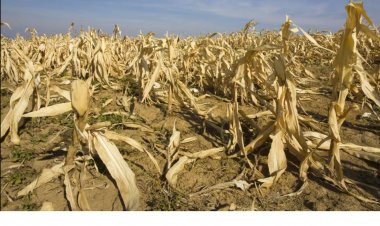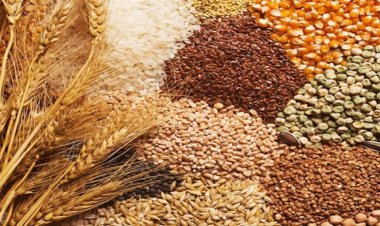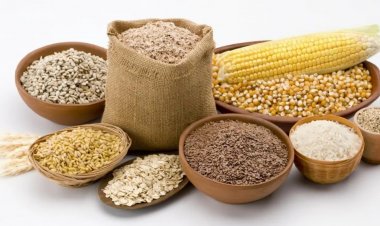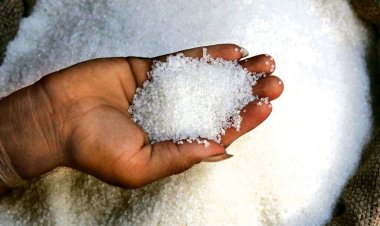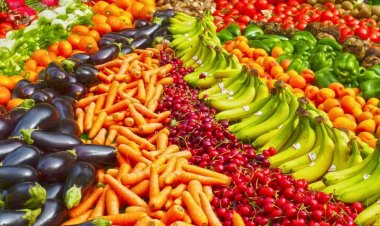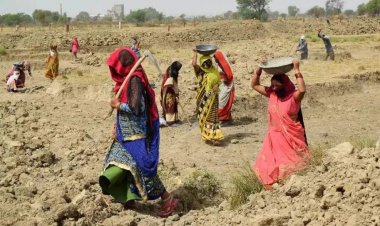India Poised to Drive Global Agricultural Market Growth, FAO-OECD Report Reveals
Over the coming decade, China’s role in global food and agricultural consumption is set to diminish, while India's is expected to expand.

Emerging economies have increasingly shaped global agricultural market developments over the past two decades and are expected to continue this trend over the next decade, with notable regional shifts, according to the OECD-FAO Agricultural Outlook 2024-2033 released by the Food and Agriculture Organization of the United Nations (FAO) and the Organisation for Economic Co-operation and Development (OECD).
A key highlight of the report is the projected rise of India, Southeast Asia, and Sub-Saharan Africa as major players in global agricultural consumption and the declining role played by China. While China led the previous decade with 28 percent of global consumption growth in agriculture and fisheries, its share is expected to decline to 11 percent over the next decade due to a declining population, slower income growth, and stabilizing nutrition patterns.
In contrast, India and Southeast Asian countries are set to account for 31 percent of global consumption growth by 2033. This surge is driven by rapid urbanization and increasing affluence. Among predominantly low-income regions, Sub-Saharan Africa is projected to contribute a sizeable share of additional global consumption (18 percent), primarily due to population growth-driven demand for food.

Total consumption of agricultural and fisheries products is projected to grow annually by 1.1 percent, with the majority of this growth occurring in low- and middle-income countries. Middle-income nations are expected to see a 7 percent increase in food calorie intake, largely from staples, livestock products, and fats. Low-income countries will experience a 4 percent increase in calorie intake, which is insufficient to meet the Sustainable Development Goal of zero hunger by 2030.
FAO Director-General QU Dongyu emphasized the importance of addressing productivity gaps: "The Outlook confirms the need to implement strategies that bridge productivity gaps in low- and middle-income countries to increase domestic production and boost farmers’ incomes."
OECD Secretary-General Mathias Cormann added: "This Outlook has served as a valuable reference for policy planning, providing a sound evidence base and data for medium-term prospects for agricultural commodity markets. Over the coming decade, the volumes of agricultural commodities traded globally are expected to increase between net exporting and importing regions, with significant consumption growth in India and Southeast Asia."
Focus on Productivity and Sustainability
The report projects that growth in crop production will be driven primarily by productivity increases on existing land rather than an expansion of cultivated areas, leading to a decrease in agriculture’s global greenhouse gas (GHG) emissions intensity. Livestock and fish production growth will similarly benefit from productivity improvements, though herd expansions will contribute as well. Despite these improvements, direct agricultural emissions are expected to rise by 5 percent over the next decade.
Significant productivity gaps, especially in Africa and Asia, remain a challenge. These gaps are attributed to technological limitations, restricted input use, and adverse climatic conditions, which impact farm incomes, food security, and increase reliance on food imports.
The Outlook underscores the importance of well-functioning international agricultural commodity markets, which are vital for global food security. Twenty percent of global calories are traded, and rural livelihoods benefit from participation in these markets and global agrifood value chains.
While international agricultural prices are expected to return to a slight declining trend, this may not be reflected in local retail food prices. The report also includes a scenario simulating the impact of halving food losses along supply chains and waste at retail and consumer levels by 2030. This could lead to a 4 percent reduction in global agricultural GHG emissions, lower food prices, and potentially reduce the number of undernourished people by 153 million by 2030.
Commodity Highlights and Projections
- Cereals: By 2033, 41 percent of cereals will be consumed directly by humans, 36 percent will be used as animal feed, and the remainder will be processed into biofuel and other products.
- Oilseeds: Yield challenges are expected, particularly in major producing regions like Indonesia and Malaysia for palm oil.
- Meat: Poultry meat will dominate growth, accounting for 43 percent of total meat proteins consumed by 2033.
- Milk: Global milk production is projected to grow at 1.6 percent annually, with most growth in India and Pakistan.
- Fish: Aquaculture will drive 85 percent of additional fish production, raising its share in global fish production to 55 percent by 2033.



 Join the RuralVoice whatsapp group
Join the RuralVoice whatsapp group


















